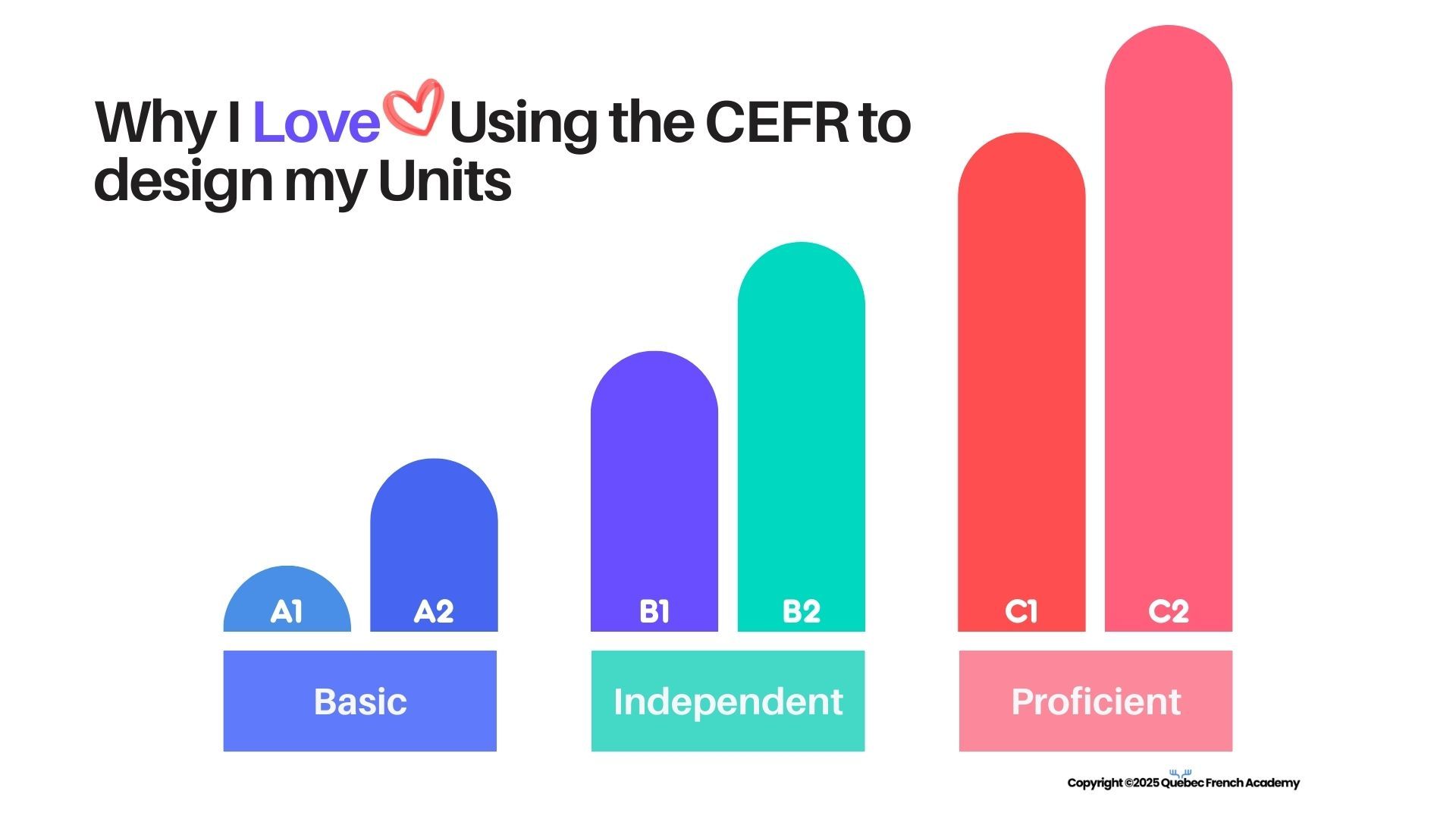
Why I love Using The CEFR to Design my Units and Why You Should Start Using it Too!
You might have not heard much about the CEFR, but it literally changed the way I taught and designed my curriculum. Learn about what the CEFR is and why you will also love it!
Having come from a background in French immersion and French as a first language, I found myself quite disoriented as I transitioned into teaching the Ontario Core French program. Like many of you, I was suddenly responsible for preparing seven different lesson plans each day, spanning eight grade levels from Grade 1 to Grade 8. To make matters more challenging, the previous teacher had left no resources behind, and the materials provided by the school were outdated.
As I delved deeper into the Ontario curriculum, my anxiety grew. The curriculum was vague and did not specify the content to be taught, which stood in stark contrast to the prescriptive nature of the Quebec curriculum I was used to.
It was at this point that a French friend of mine, who works as a French as a second language tutor, told me, “Mais pourquoi n’utiliserais-tu pas le CEFR pour structurer tes programmes?” I had no clue what the CEFR was, but I was willing to try anything at this point. And this was the start of my journey with the CEFR.
What is the CEFR?
What is the CEFR?
The CEFR (Common European Framework of Reference for Languages) is a framework that establishes standards for measuring and describing language proficiency across reading, writing, listening, and speaking. You may already be familiar with “I can” statements, which are often used to evaluate students’ progress and proficiency stages.
With the CEFR and with the help of the DELF test, students are classified into levels ranging from A1 (complete beginners) to C2 (very advanced). Another key aspect of the CEFR which I really appreciate is its action-oriented approach, which encourages us to engage students in meaningful, real-life activities. This could include tasks such as sending a text or email, buying subway tickets, or ordering food at a restaurant.
The CEFR in Canadian FSL Classrooms
Although the CEFR was initially developed to standardize and harmonize second language levels across Europe, it has been adopted increasingly in Canada over the past decade. More and more provinces and school boards are now encouraging teachers to use this framework. Your school board may already have provided training or documentation on the CEFR.
Why I Love the CEFR
Within just a few weeks of teaching Core French, I began using the CEFR to design my units with a backwards-planning approach. While it took several years to fully implement this across eight grade levels, the CEFR helped me structure my programs around concrete, action-oriented opportunities.
Here’s a brief overview of how I approached it:
- I identified the themes for each grade level.
- I developed learning goals and success criteria using “I can” statements.
- I pinpointed the necessary vocabulary, grammar, and socio-linguistic elements for each unit.
- I created short, action-oriented tasks for students.
- I searched for authentic activities, materials, and literature to support these tasks and help students master the relevant concepts.
- I designed assessments that aligned with the Ontario curriculum and the action-oriented tasks students practiced with.
After four years, I had developed a highly structured program that placed students at the center of their learning. My goal was to recreate authentic, action-based, and meaningful tasks, so students could experience real-life situations as much as possible.
In practice, this meant fewer games and worksheets, but far more student interaction, risk-taking, and—most importantly—students genuinely felt they were learning something useful.
Getting Started with the CEFR
I personally find myself overwhelmed with the original guides and updates. So if your school board or ministry hasn’t given you simplified guides, I recommend starting your exploration here:
I really like the resources from TransformingFSL.ca
and more specifically this CEFR 101 workshop information.
Here are the “I can” statements which I used in my unit design.
If you wish to go in depth, here is the official CEFR website.
Copyright © 2025

